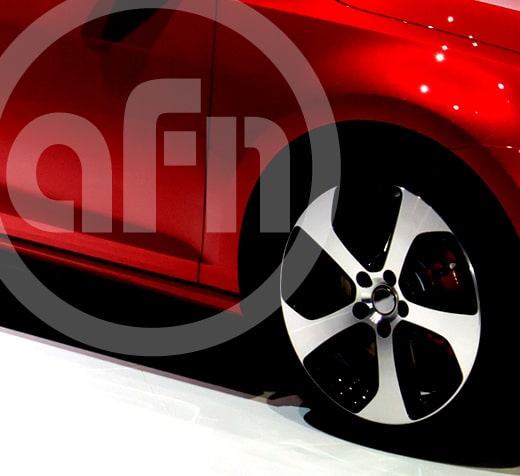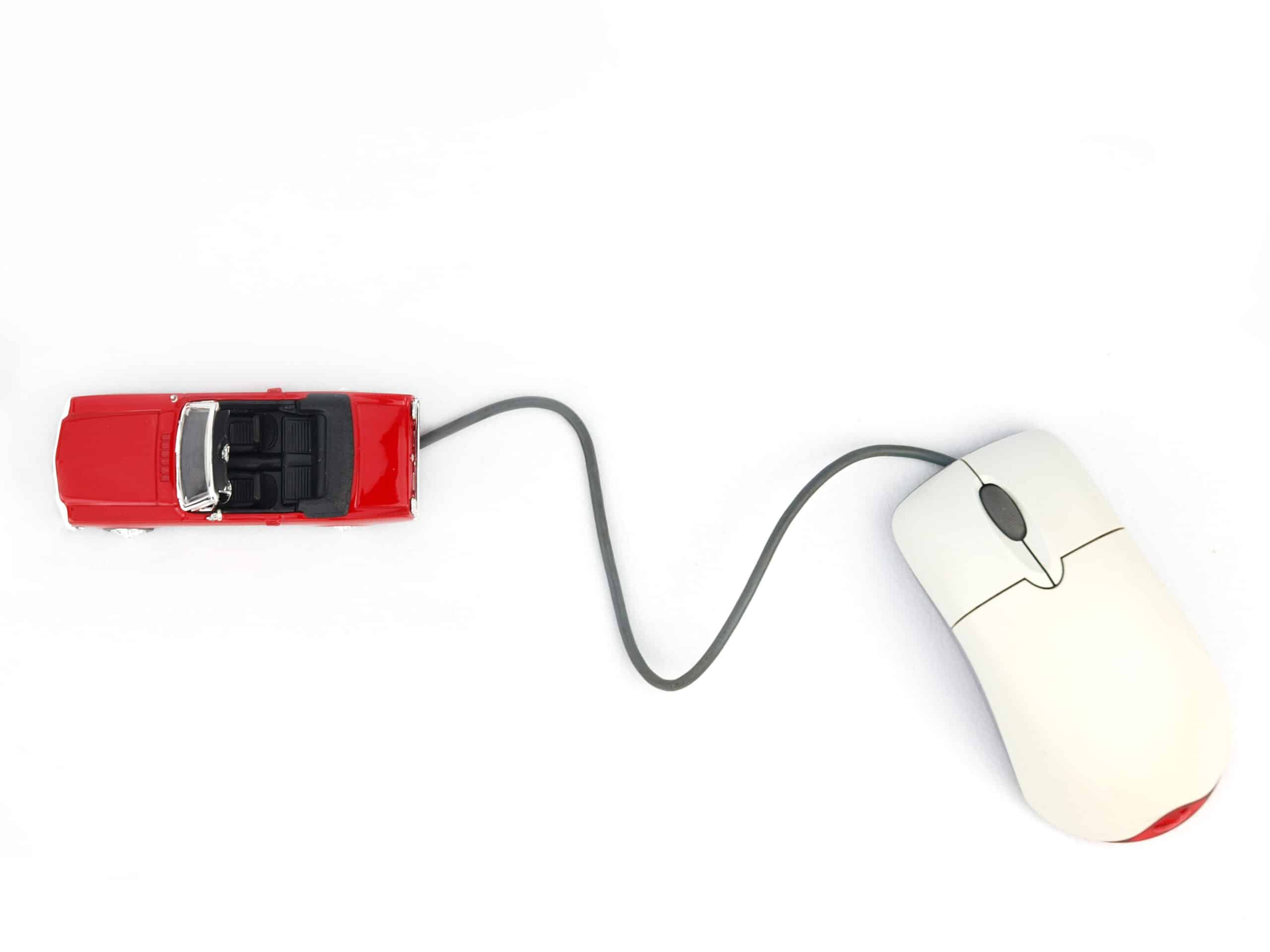Big Three Product Recovery Rundown
The media has generally portrayed the “big three” as one monolithic entity. In actuality, they’re each in vastly different positions. Blanket assumptions about the big three are almost invariably incorrect, because of the great differences in where each company stands.
In the last few days there has been better information reaching the public about these differences, but in general all three makers and their requests are being lumped together by people on the left (Michael Moore) and on the right (Dick Shelby).
In my opinion the “bailout” should really be evaluated on the basis of three individual requests rather than one blanket deal, and it’s important to look at the product specifics of what these companies are doing and what they are going to sell to return to profitability.
I’ve followed the Auto Industry closely for most of my life. I have no allegiances to any manufacturer or company, but I’ve seen the industry from the highest aerie (I’ve met Bob Lutz and other VIP’s at product launches and media events) to the lowest valley (prying parts off of cars that have been in junkyards since the Nixon administration), and everywhere in between. What I’m trying to do with this post is explain in a little bit more depth the potential for product recovery among these three companies, and share with you some information that is not generally in the headlines.
If this bailout were an investment, then this is information I would want to hear – about where the trio are and what we can expect from them in the near and long term as far as what they’ll sell to the public to get back to rationality and profit.
There is also one key factor that has exacerbated the situation to the crisis level we’re at now – and that is the credit crisis.
The last time we saw any new issue in Auto ABS was October 6th – more than two months ago. And since late July, we’ve only seen three securitizations (Americredit’s 10/6 issue included).
The total volume of Auto ABS securitizations in 2007 was about $87 Billion. The Total for 2008, if no securitizations are issued this month, will be just under $35 Billion. Obviously with such a huge reduction in available credit, consumers cannot get financing and even dealers are having trouble with floorplan financing.
A North Carolina Pontiac-GMC dealer was recently interviewed on a drive-time show on NPR (The Takeaway) about floorplan financing, and how he can’t get any. When the general public hears about troubles with floorplan financing, the situation is very bad indeed.
The crisis has cratered automobile sales across the board by more than 30% – and this slide is not limited to the United States or the big three. But because of this downturn, those in the worst position before this crisis are feeling it the most – and that would be the big 3. They were hurt hard by the fuel price spike, but the credit crisis has turned a bad, but survivable, year into an apocalypse.
The big three may be the most impacted right now because of their losses earlier in the year, but should the credit markets not thaw, other manufacturers will begin to have serious problems, as we are beginning to see with Nissan-Renault, where U.S. sales are down over 40% and production at some factories both in France and other markets (Russia, Romania, Brazil) – has had to be curtailed.
Now back to the issue at hand – let’s take a look at what the recovery plans really mean, and what we can expect from them.
Of the three, Ford is in by far the best position.
Financially, they have the dollars to avoid actually taking a bailout now. In their request, they’re asking for congress to set aside $9Bn in a reserve for them should the credit markets not thaw out by spring. So even though they are requesting funds, they’re hoping to avoid accessing those funds.
From a product standpoint, Ford is also the furthest along in modernization. It already has 2-mode hybrids, and as of two weeks ago those systems have been expanded to family cars (Fusion/Milan) from the small SUV’s (Escape/Mariner). Recognizing a market shift, Ford has already arranged to begin assembling the Fiesta and S-max in the NAFTA corridor beginning next year, with the Kuga small crossover (about the size of a Kia Sportage) to follow and the next international Ford Focus in 2011. Ford recognizes the mistake it made in not bringing the Series-2 Focus to the United States and continuing with the series-1 car, a step it took a drubbing for in 2004 when the newer, better version was launched.
Ford is also bringing us a fuel-efficient small van (the European Transit Connect) and is hoping to sell a fully-electric version of this van here in 2011, and development is already underway. There is talk of adapting the drivetrain to the Fiesta if the Transit Connect Electric succeeds. Ford is also redesigning the Explorer into a car-based crossover with only four-cylinder and V6 engines – V8’s go away for 2011.
Alan Mulally is responsible for much of this – and he’s also personally determined that Ford will dump the stone-age, gas-hungry Econoline van in favor of the much better, much more frugal European Ford Transit, which is similar to the Dodge Sprinter that’s had so much success in the last three years. Mulally’s been a good executive in his less-than-two-years in his post, and he should stay. The only major decision of his that I have strongly disagreed with was selling off Ford’s stake in long-time partner Mazda. Some of Ford’s best vehicles were designed in concert with Mazda and this will represent a distinct shift in product planning.
Ford’s products are well made and worthwhile, and the pipeline is very good. Ford’s international divisions are profitable and its head of German operations, Bernhard Mattes, recently said that Ford of Germany would not be asking the German government or EU for any bailout, as Opel AG is doing, because they “have enough liquidity to deal with the crisis.” Ford cancelled all bonuses for all executives worldwide this year and for all North American non-factory employees, and may reduce executive pay as a consequence of the current crisis.
If I were voting on Ford’s request, I would vote in favor, because in a lot of ways, Ford has demonstrated that it’s doing things very well, and has a concrete plan to continue doing them.
General Motors is far along in the process of turnaround, but not as far as Ford, and GM is asking for $12Bn, with an additional $6bn in reserve if the credit markets are still frozen in the spring – just like Ford. While GM’s stock value may be $3Bn, the actual company is worth far more. The share price represents a crisis of confidence among the shareholders and among the market at a time when people are cashing out stock for liquidity; and it also it represents shareholders taking only a short-term view – a recurring issue with GM. It may be, however, that any GM stockholder who doesn’t hold for a long, long time, is just going to be wiped out.
GM’s current products are improving rapidly, but there are still some real turkeys. Nobody wants a Buick Lucerne, and some fairly good products have met with a cool reception (Saturn Aura). There are also problems with the cost of producing some cars – in particular the Saturn Astra, which is made in Germany. It simply cannot be made cheaply enough to turn a real profit or be a volume leader, and GM has given it only one underpowered engine. If it had a better range of engines and a better price, this would be a genuine Civic-fighter, as it is in Europe.
GM has also suffered almost interminable delays in getting a proper 2-mode hybrid to market. The Saturn Vue 2-mode should be out now, but it’s been delayed twice. The system is currently available only on a couple of the large pickups & SUV’s, and hasn’t been widely sold. The Vue will be the first mass-market GM formal 2-mode hybrid, a system that is much more efficient than GM’s good-but-not-super assistance or “mild” hybrids, which are already here.
But there are many good GM products right now, and even more in the pipeline, including cutting-edge crossovers from Cadillac (SRX replacement) and Saab (9-4x), 2-mode hybrids at Saturn, Chevrolet, and GMC, and a very nice new small car – the Cruze – which will replace the Cobalt/G5. The Cruze, which is already in pre-production, will be powered by 1.4 liter turbocharged engine and should return 38-43 mpg. The Cruze is already in pre-production.
Unlike Ford, GM has not indicated that would assemble some of its better European models here or sell them here – and that’s really one of the things it needs to do if it wants to rehab itself. The Opel Corsa and Agila would be welcome additions at Pontiac, Chevrolet, or Saturn – far superior to the aging Chevy Aveo/Pontiac G3. The products are there, it’s just up to GM to give them to us – but it’s doubtful many in congress even know that such cars exist. Certainly the media has never mentioned the Corsa, Agila, or Mazda5-like Meriva as potential models that Americans might like.
GM could also instantly raise its truck CAFE number by replacing the Chevy Express/GMC Savana with the Vauxhall/Opel Vivaro, which is a better product anyway. After Ford converts to the Transit, GM will the only company left making a traditional American cargo van, which will be smaller on the inside, worse to drive, and use more fuel than the competition.
Only GM’s plan for Pontiac, to reduce it to a niche brand producing only performance vehicles sourced mostly from Holden, represents a plan like this – and these vehicles are not mass-appeal, volume-leader models. It’s the right idea, but in the wrong direction.
GM is also still tied to Suzuki, which designed the Agila (it’s a clone of Suzuki’s Splash supermini) and has a flotilla of good small cars to its credit. GM needs to use this relationship in a more advantageous way. GM reduced its share in Suzuki to just 3% in 2006, but they are obviously still working together.
GM’s prospects for a turnaround are good, if it were not for the credit crisis, GM would be faring quite a bit better. It took a huge hit earlier in the year with the fuel price spike, but its current dire straits are down to the credit crunch, not a fundamentally bad product. GM is, however, battling the image of rusting Chevy Celebrities, Citations with no brakes, Vegas with warped heads, HT4100 Cadillacs with no power and even less durability, and a host of other past errors. It wasn’t until 1997 that GM really started a genuine product recovery in North America and it’s been a long, slow process. But even though the image remains tainted, much of the product really has gotten very good.
But GM is also the target of many in the media who claim that it only offers big, gas-guzzling SUV’s and has no other products, a conclusion which is false on its face. GM launched its Honda-Fit sized Aveo three years before Honda brought the Fit here, and at the time it had little competition other than the Toyota Echo. Many pundits cite Toyota as an example that GM should emulate on efficient product – but conveniently ignore Toyota’s own love affair with large vehicles. Toyota actually offers a wider selection, by number of platforms, of SUV’s and trucks than GM, and worldwide, it sells more than twice the number of individual SUV platforms that GM does, including five different variants of the Land Cruiser.
Another issue on the SUV point – it is true that GM, Ford, and to a lesser extent Chrysler depended heavily on SUV’s for far too long – having historically been a leader in that segment, they were a stronger market force in that sector than manufacturers who came to the SUV party later. But you can’t blame the big three for this. Every manufacturer was keen to get in on the SUV boom, even to the point where they would put out sub-par products to do so. Most people have mercifully forgotten Honda’s first efforts at SUV’s – the Acura SLX and the Honda Passport, both re-badged Isuzus with suspect safety and reliability records. Even manufacturers who really have no business making SUV’s – like Porsche and BMW – cashed in on the market. Even Maserati seriously flirted with the idea of making an SUV (the Kubang).
Then there is the workforce reduction. GM must trim its workforce. It has been chasing quantity at the expense of quality and market equity for years. Right now, there is too much capacity chasing too few sales. I don’t want to see anybody lose their jobs for the simple reason that they are redundant, but in this case, it has to happen. It is the choice between losing 20,000 jobs and losing all the jobs.
But I also think that middle management at GM needs to be eviscerated. There are too many committees, too many decisions made with group think rather than personal innovation and inspiration. I would also suggest that though Rick Wagoner isn’t doing a bad job now, that he should resign within 12 months. Wagoner has never been a great executive for GM, although he hasn’t been horrible either, but I feel that his short-term view has not helped the corporation.
GM also needs to do something to silence Bob Lutz‘s denials of global warming. It’s okay for him to feel that way personally, but when he speaks his opinions he taints all of GM as arrogant and out of touch with a public that obviously feels strongly about these issues – which does nothing good for the corporation’s image. Lutz is a great car guy, but he needs to stay far out of the PR limelight if he’s going to talk like that.
That said, GM should get the funds it’s asking for. There isn’t any reason why GM should fail. The recovery plan is sound and GM is even offering an equity stake and agreeing to take on direct government oversight in exchange for the funds. If I were voting on GM’s request, I would vote yes – but with some caveats.
Some product steps should be mandated by this government assistance. Obviously priority should be given to the expansion of the hybrid lineup and introduction of the 2-modes, but congress should also mandate a consolidation of the worldwide car line and introduction to the United States of vehicles like the Corsa, Agila, and Meriva – two of which are already sold in Mexico. An emphasis should be put on GM using its global resources better, reducing the number of overall platforms and offering the best cars in the portfolio here, rather than the ones Detroit execs have historically been satisfied with.
There are some things that we aren’t hearing about from GM and Ford, however. Things which have to factored in.
Both companies have already lobbied the government of Sweden for cash injections for Volvo and Saab in anticipation of selling off these brands, perhaps even selling them the Swedish government. GM’s plan for recovery specifically involves selling off Saab, and Volvo, while still a good brand, has been a money loser for Ford almost since its acquisition – although it has provided Ford with some good engineering. It is unclear who would buy these two brands right now, because nobody is in a position to take them on. But these funds are essentially part of what’s going on here – our congress is not the only place these makers are asking for assistance. Adam Opel AG, the European division of GM, has approached the German government for 1Bn Euro in assistance, and Angela Merkel indicated that Germany is ready to give this money to Opel, though they are watching the U.S. bailout hearings very, very closely (if nothing were forthcoming in the United States, Germany might reconsider this life line).
That leaves Chrysler. And Chrysler is in deep, deep trouble.
Chrysler is making the largest request for funds, has the least likely road to recovery, and has hardly anything in the pipeline that would signify true revival. And just today, we learned that Chrysler is making contingency plans for Chapter 11 “just in case.”
Cerberus seems as clueless about how to run Chrysler as BMW was about running MG-Rover. They want to improve it but don’t want to spend anything, and they don’t wan it to be a drain on their other holdings. Daimler’s poor management and the brain-drain of former Chrysler planners left the company with almost nothing worth buying except for the LX-platform cars (Chrysler 300 & Dodge Charger/Challenger) and the Jeep Wrangler. Good as these are, they’re niche products – and they can’t carry the whole company. Nor will they stay fresh for long.
Many of the company’s other products – Caliber, Sebring, Avenger, Compass, Patriot, Journey – have essentially fallen flat. These cars just aren’t as good as the competition, or they suffer stylistically. Buyers have not been snapping them up, and that’s one of Chrysler’s main problems. You can find nearly-new 2008 Avengers and Sebrings on lots for $12K, an almost 50% discount off of decently-optioned new ones at the dealer – which is further driving down demand. The PT Cruiser, the “old faithful” of the line, is now a decade old and out of date against more modern competition. It’s also become more costly to produce as cars on the same platform have gone out of production.
The Minivans are still selling, but Minivan sales as a whole have been in a steady decline for a decade – and it’s no longer clear that Chrysler’s once-class-leading Minivans are particularly better than those of Honda and Toyota. Chrysler has had some help in that GM and Ford both gave up on Minivans altogether, and letting VW use the Caravan as the basis for its Routan did give Chrysler some VW-sourced diesel engines for European market Chryslers, which was badly needed. This is the bulk of the lineup, and in the meantime SUV sales and sales of the new Ram and the older Dakota pickups collapsed over the summer and have not recovered.
This last point raises a particularly sore issue. Right now you will find the Chrysler Aspen and Dodge Durango hybrids on Chrysler’s website. But they are no longer available for sale. Only a few hundred units were made before Chrysler decided to pull the plug on these. On October 23rd, Chrysler announced that the Newark, Delaware, plant where these slow-selling SUVs are built would close by the end of December, so they ceased production of the hybrids early. After just a few hundred were made, they killed off a product they had spent a large amount of money developing. The hybrid system will no doubt return on other models, but it’s a real setback, and not just for Chrysler. These hybrids marked the functional debut of the 2-mode hybrid system GM and BMW developed in concert with Chrysler. These SUV’s were well past their sell-by date without the hybrid powertrain, but they did represent at least an attempt to venture into the hybrid market once it was added.
Then there’s Chrysler’s pipeline. There is an electric sports car in the mode of the Tesla in the works (the Dodge EV), based on the Lotus Europa, and two plug-in hybrids on the way, which use electric power for up to 40 miles and then switch over to gasoline power. But they are new versions of existing products, not new products. The DodgeEV is likely to be very expensive and have a very limited market – because it is a two-seater based on an already expensive exotic car.
There is also a collaboration with Nissan-Renault to build a new small car, which was originally going to be built in China by a different partner. It isn’t clear when this car, based very loosely on the Dodge Hornet show car, will materialize. And that’s it.
Unlike GM and Ford, Chrysler has no international products to draw on, no ready-made small cars or crossovers waiting in the wings. Chryslers in Europe are U.S. models assembled in Austria, and they are expensive and a poor fit for European tastes. The idea that a couple of plug-ins and one new small car that is nowhere in sight are going to save this company is just unrealistic.
Chrysler does not have vast reserves of capital, and parent Cerberus seems unwilling to inject any. Cerberus claims that it is burdened heavily by GMAC at the moment, but it seems like Cerberus is attempting to hedge by asking the Government for money for Chrysler while keeping its own cash in reserve.
Bearing all this in mind, if I were in congress I sadly could not vote for any appropriation for Chrysler. There does not seem to be a realistic plan here, and it remains unclear exactly what Cerberus is doing. Chrysler has already quietly begun the process of buying out or offering early retirement to employees, and there is likely to be a continued “brain drain” at Chrysler as long as it remains in this state.
Chrysler is the smallest of the big three, and while it has some good assets and I don’t doubt that its workers are dedicated, it doesn’t really seem like there’s a future for this company long-term. It pains me to say that about any company because it means that real people are going to be hurt and that our choices as consumers will be further reduced, but I don’t see any real chance for a fundamental turnaround at Chrysler.
If Chrysler were to go under, GM and Ford would be able to survive. If GM or Ford went under, the other two players would be dragged down with one of these larger companies.
The best option for Chrysler, in my mind, is either bankruptcy and sale or nationalization and sale. Just like Saab and Volvo, however, it remains to be seen who would be able to step in and buy Chrysler or its remains. Nissan-Renault would’ve been the prime choice, but with sale down globally and Renault having to shutter factories and consider asking the EU for assistance, and with Nissan sales in the United States skidding hard, it would be a big stretch for Nissan-Renault to come in unless it was for pennies on the dollar. They’ve already said that they aren’t interested – although no doubt they’re watching closely. One journalist I’ve recently spoken with suggested that the Dodge Ram might make a nice replacement for Nissan’s overlooked Titan, but what about the massive price of the acquisition?
Even Chinese companies may not be willing, as China is about to experience its very first automotive downturn and it’s unclear how that will shake out.

















One follow up – Nissan announced this afternoon that production of the Titan pickup will cease in 2010 and that the Titan’s replacement will come from Chrysler. Ram replaces Titan? Veiled overture to Cerberus? Hmm…
A recent Automotive News article references Chrysler’s tactics to get dealers to order more vehicles. Excerpts as follows:
” You have two choices,” said Chrysler co-President Jim Press. “You can either help us or burn us all down.”
The executives said 70 percent of the dealer body had heeded the company’s request to order 78,000 vehicles they had been allocated for February. Press made the first plea Jan. 24 at the National Automobile Dealers Association convention in New Orleans. “We’ve got to get the cash flow coming in so we can get to March 31 as a viable company,” Press said in a conference call to dealers. “By doing that right now, we can begin to harvest the long-term benefits of the investments we’re making.” “By successfully keeping the doors open in January and February, we’ll get the loan,” said Press, referring to $4 billion Chrysler has received from the U.S. Department of Treasury. Chrysler must submit a plan to the government by Feb. 17 to show it’s a viable company. The government will decide by March 31 whether to keep the loan in force. “Think of this as a bucket brigade. Right now 70 percent of positions are filled. If we don’t get the other 30, we’ll all burn down,” Press said in extending Friday’s deadline for orders until Monday.
Press also told dealers: “If you decide not to do that, we’ve got a good memory of who helped this company make it.”
He urged those dealers who aren’t in a position to order cars to discuss their situation with the company. Chrysler’s U.S. sales have dropped by more than 50 percent in each of the past two months as industry sales totals fell to their lowest mark in 27 years. Press urged dealers to absorb some short-term pain in the hope of long-term prosperity. He told dealers that if Chrysler can make it through this “rough patch” it would be able to offer a fleet of fuel-efficient vehicles coming from its proposed partnership with Italy’s Fiat S.p.A.
Chrysler reported a 151-day supply of vehicles on Feb. 1, more than twice the level considered optimal. Measured in units, the company’s U.S. inventory was down 13 percent from a year earlier, to 359,980.”
My take:
The dealers that are still left in business are probably hanging by a thread. Many are already on “finance hold” with their floor planner and CAN”T take any more stock. Chrysler Credit and/or their floor planing banks have probably made them pay off over age inventory so they have no cash left, and all the while the factory has been holding up their incentive and rebate payments, not to mention their “hold back” payment. Cerberus won’t put any more money in so they hammer the dealers and beg the gov’t. Some dealers believe they’d sell out their dealers in a heartbeat if it benefited them in any way. I hear they send out parts statements and expect payment for parts when at the same time they owed the dealer many times more for rebates, incentives, hold back etc.
I still don’t understand why banks floor plan the new vehicles for invoice when the dealer eventually gets money back amounting to thousands of dollars per unit. Talk about being upside down in a lot of inventory! Of course the OEM has guaranteed to buy them back at invoice if a dealer terminates… but what if the OEM is BK?
I wonder if Press’ thinly veiled threat has legal ramifications?
In response to Jeff’s question “how many lessees REALLY want their car past lease end?”, it was my experience during my remarketing days with MBCC and CF that there’s a significant number of people who are interested in retaining their vehicle. However, as the gap between market value and residual value grew so did the challenge of mitigating our risk by keeping these cars from coming back.
Maybe his model allows consumers to have the vehicles purchased on their behalf through upstream channels as well as through the traditional auction lane. But he is going to have auction reps purchase the vehicles on behalf of the consumer? I would imagine that will put the auctions at odds with the consignors…that could get messy!